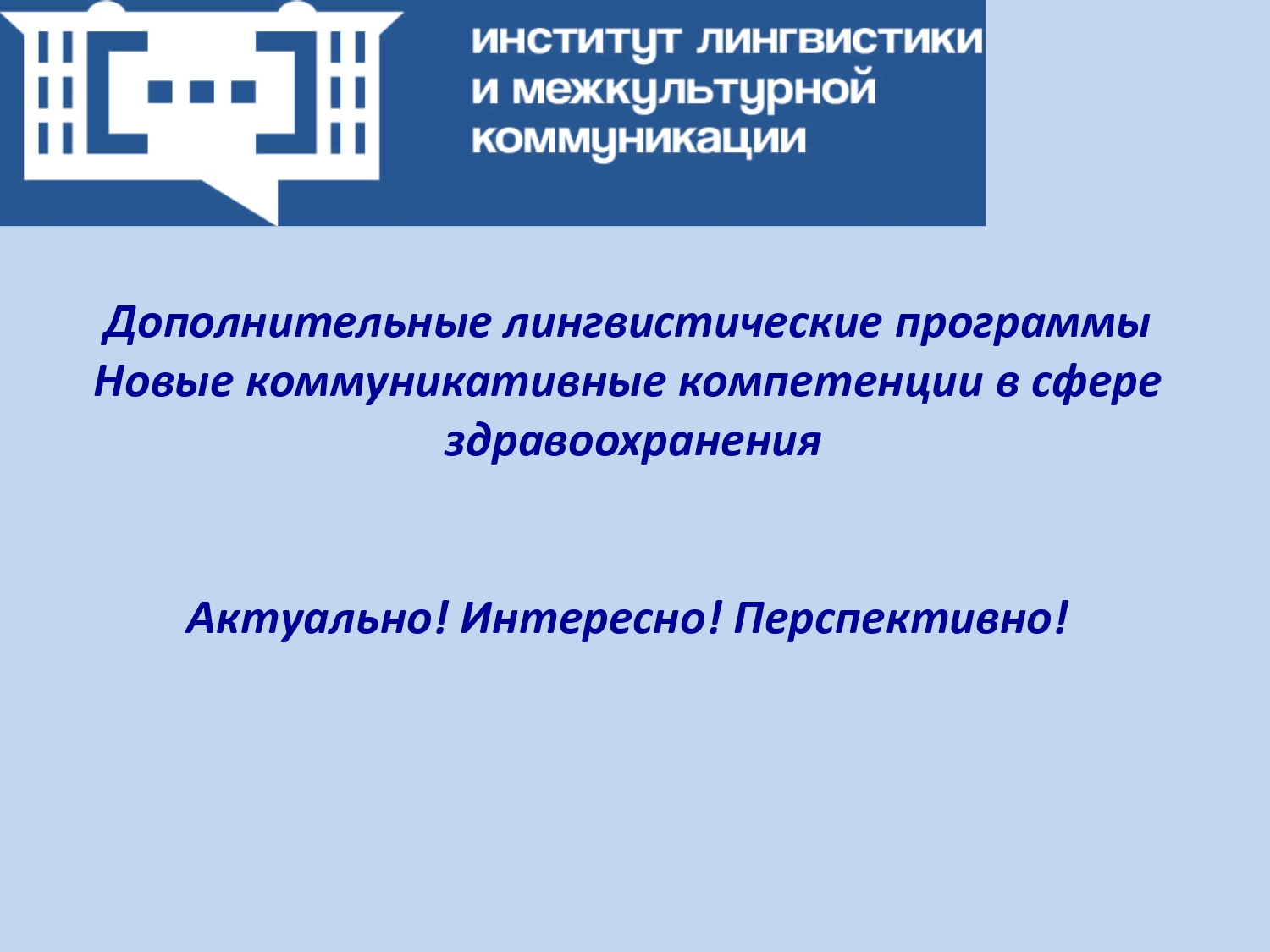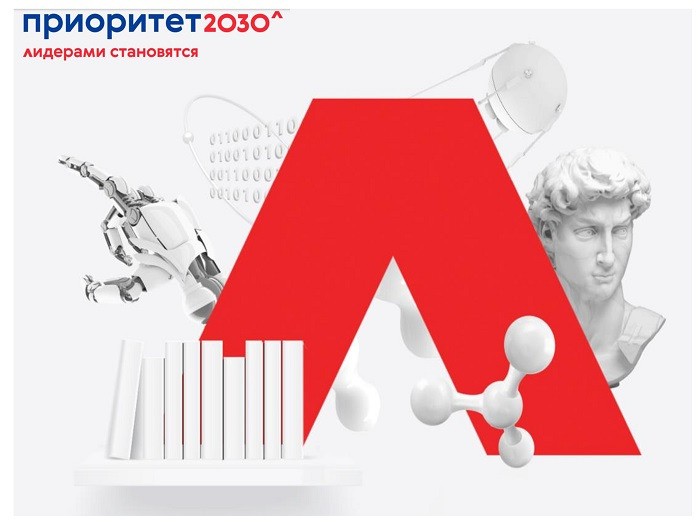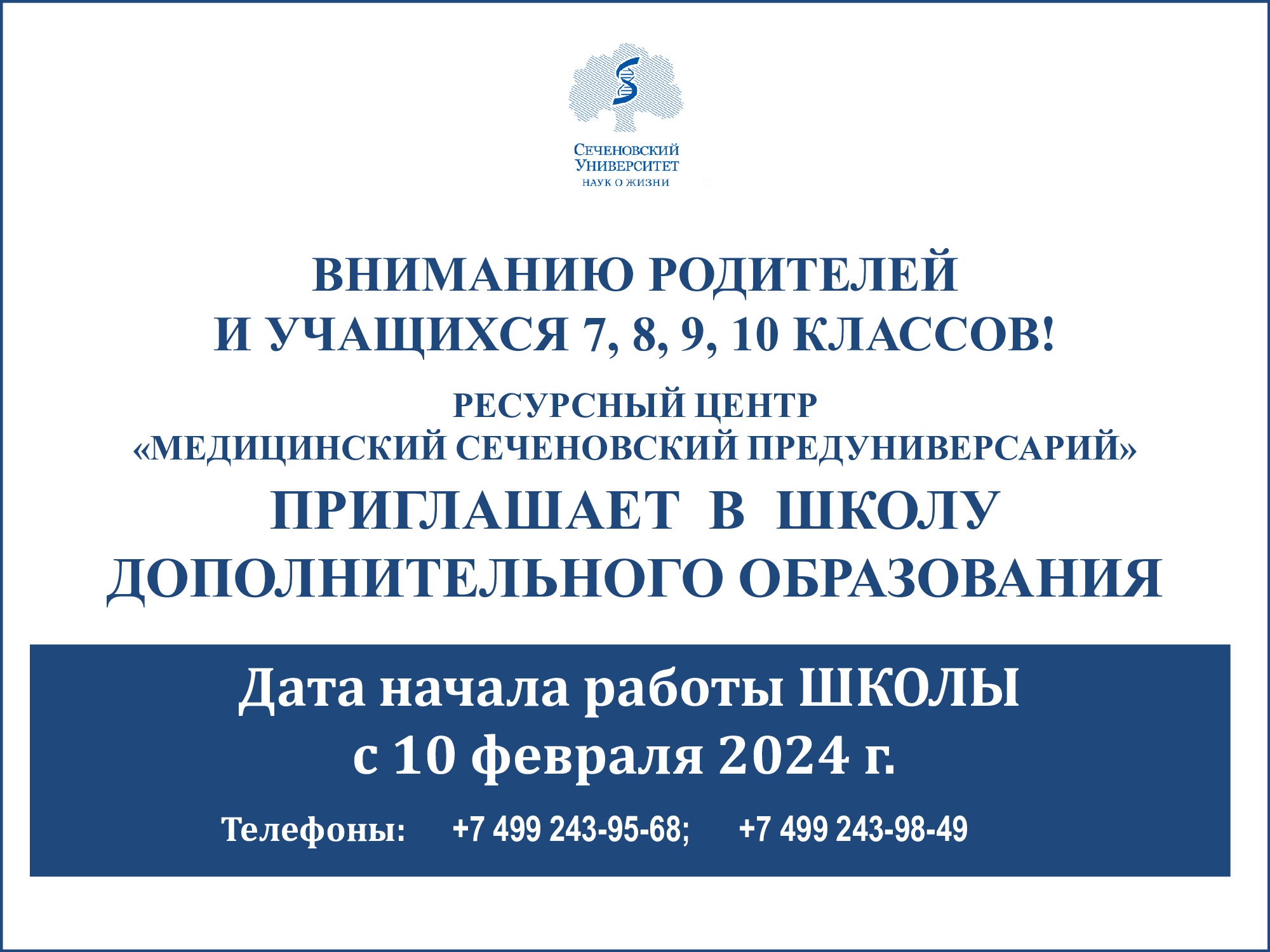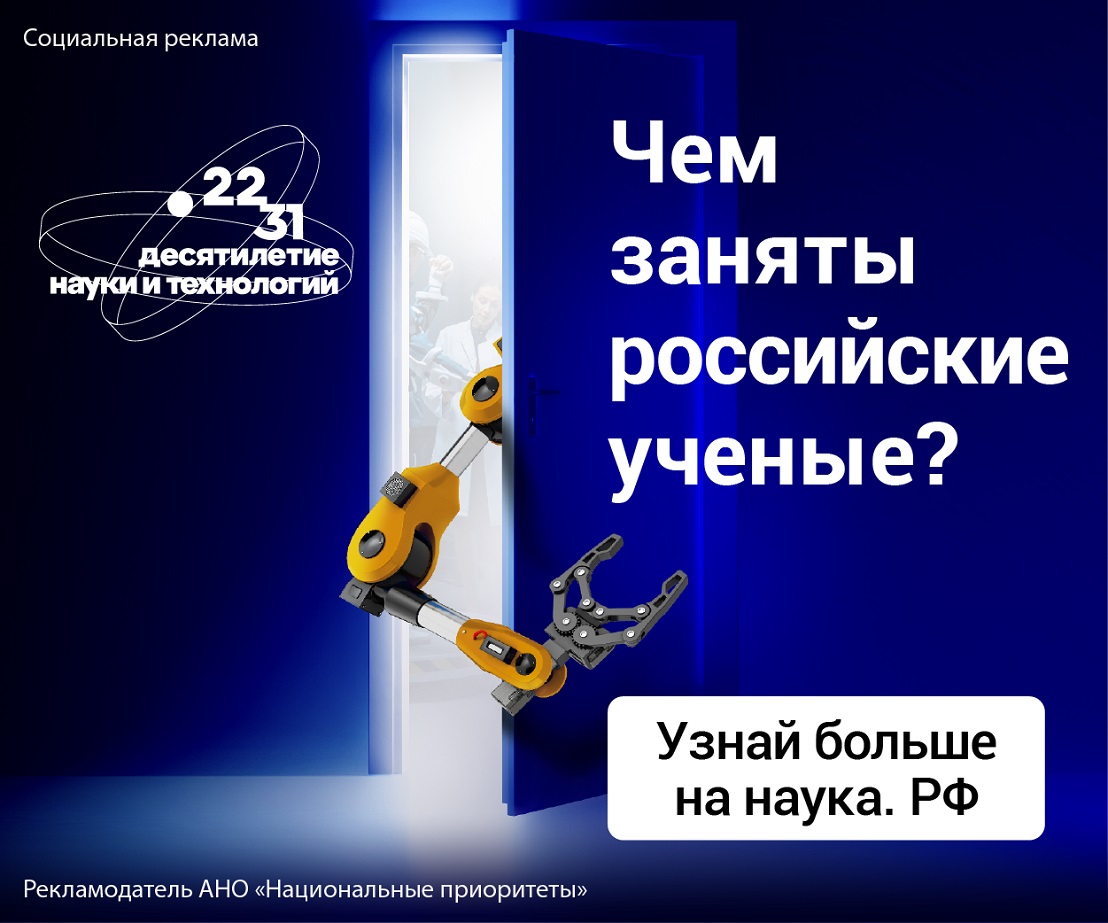|
Comparative analysis of the use of domestic bioresorbable collagen membranes at the closure of postoperative defects of the oral mucosa in an experiment in vivo
|
15.04.2021 |
Blagushina N.
Diachkova E.
Volkova M.
Pankush S.
Tarasenko S.
|
Biointerface Research in Applied Chemistry |
10.33263/BRIAC112.98049812 |
0 |
Ссылка
© 2020 by the authors. The success of using soft tissue transplants is enough for their spreading in the clinic, but the need to cover the surface, where the transplant was taken from, can be forgotten. It can lead to long-term discomfort of the patient in real life, in some cases to complications alike bleeding; We performed the analysis of the use of different new xenogenic resorbable membranes created within our University in compare with the natural healing of oral mucosa defects in the experiment in vivo on 36 rabbits after performing of the surgical wound on the palatine side (5x5 mm). All animals were separated (divided) for 3 groups: #1 group of control and main groups #2 and #3, where we used pericardium and collagen film for covering mucous defects. We assessed the edema, hyperemia in the operation side, the pain according to animal behavior, the histological picture after animals completion of the experiment (on 3rd, 6th and 10th days); The decrease of clinical signs of inflammation in groups of collagen and pericardium films use (p<0.05) was statistically confirmed. Analysis of histologic investigation of biopsy specimens has shown the faster and massive growth of soft tissue in the donor site after application of pericardium and collagen films (p<0.05). An analysis of the experiment results allows recommending their possible use for closing the donor site after taking a free gingival graft or in the zone of postoperative wound defect in the oral mucosa in clinical oral surgery after specific clinical trials.
Читать
тезис
|
|
Green approach for fabrication of bacterial cellulose-chitosan composites in the solutions of carbonic acid under high pressure CO<inf>2</inf>
|
15.04.2021 |
Novikov I.V.
Pigaleva M.A.
Naumkin A.V.
Badun G.A.
Levin E.E.
Kharitonova E.P.
Gromovykh T.I.
Gallyamov M.O.
|
Carbohydrate Polymers |
10.1016/j.carbpol.2021.117614 |
0 |
Ссылка
© 2021 Elsevier Ltd The functionalization of the bacterial cellulose (BC) surface with a chitosan biopolymer to expand the areas of possible applications of the modified BC is an important scientific task. The creation of such composites in the carbonic acid solutions that were performed in this work has several advantages in terms of being biocompatible and eco-friendly. Quantitative analysis of chitosan content in the composite was conducted by tritium-labeled chitosan radioactivity detection method and this showed three times increased chitosan loading. Different physicochemical methods showed successful incorporation of chitosan into the BC matrix and interaction with it through hydrogen bonds. Microscopy results showed that the chitosan coating with a thickness of around 10 nm was formed in the bulk of BC, covering each microfibril. It was found that the inner specific surface area increased 1.5 times on deposition of chitosan from the solutions in carbonic acid.
Читать
тезис
|
|
Adsorption and photocatalytic performance of Au nanoparticles decorated porous Cu<inf>2</inf>O nanospheres under simulated solar light irradiation
|
15.04.2021 |
Zhao C.
Fu H.
Yang X.
Xiong S.
Han D.
An X.
|
Applied Surface Science |
10.1016/j.apsusc.2021.149014 |
0 |
Ссылка
© 2021 Elsevier B.V. In this work, pristine Cu2O and Au nanoparticle modified Cu2O (Au/Cu2O) spherical nanocomposites were prepared by a simple redox method at room temperature. The as-prepared Cu2O nanospheres with diameters of 150–200 nm show relatively large surface area. The dye removal abilities of the pure Cu2O and the Au/Cu2O nanocomposites were tested by evaluating their adsorption and photocatalytic activities towards different aromatic molecules (e.g., Congo red (CR), Methyl orange (MO), Methyl blue (MB), Rhodamine B (RhB)). The experimental results indicate that the Au/Cu2O nanocomposites exhibit much superior adsorption and photocatalytic properties to the pristine Cu2O nanospheres. Among the catalysts, 1 wt% Au/Cu2O nanocomposite shows the best removal abilities to various dyes. Besides, the removal abilities towards these dyes are quite different from each other. For deep understanding of the adsorption mechanism, molecular dynamics (MD) caculations were conducted to investigate the adsorption energy of the Cu2O spheres by simulating the porous structure and Au modification. The calculation results indicate that CR and MO are chemically adsorbed on the Cu2O materials while the adsorption of MB and RhB are physical adsorption, which are well consistent with the experimental results. This study demonstrates the porous Cu2O based nanocomposites are promising materials with high adsorption and solar light-photocatalytic performance. In the meanwhile, the underlying mechanism on the superior dye removal abilities of Au modified Cu2O nanospheres were systematically discussed.
Читать
тезис
|
|
Ultrathin Langmuir–Schaefer films of slipped-cofacial J-type phthalocyanine dimer: Supramolecular organization, UV/Vis/NIR study and nonlinear absorbance of femtosecond laser radiation
|
15.04.2021 |
Kazak A.V.
Marchenkova M.A.
Khorkov K.S.
Kochuev D.A.
Rogachev A.V.
Kholodkov I.V.
Usol'tseva N.V.
Savelyev M.S.
Tolbin A.Y.
|
Applied Surface Science |
10.1016/j.apsusc.2021.148993 |
0 |
Ссылка
© 2021 Elsevier B.V. Based on a comprehensive theoretical and experimental approach, a low-defect thin film of stable dimeric phthalocyanine zinc complex (bis-[2-hydroxy-9(10),16(17), 23(24)-tri-tert-butylphthalocyanine]zinc – J-[OHPctZn]2) was prepared. It is shown that the dye forms stable amorphous edge-on monolayers at the air/water interface with an insignificant content of cylindrical 3D aggregates. These floating layers keep their structure when transferred by the Langmuir-Schaefer method onto a solid substrate, demonstrating a tendency towards ordered H-aggregation with preserving their linear molecular properties. Mixed two- and three-photon absorption of femtosecond laser pulses (280 fs) was firstly detected on this sample, as well as the ability of a material to the nonlinear attenuation of the intense irradiation, which is important for optical limiting.
Читать
тезис
|
|
Pulsed laser reshaping and fragmentation of upconversion nanoparticles — from hexagonal prisms to 1D nanorods through “Medusa”-like structures
|
01.04.2021 |
Sajti L.
Karimov D.N.
Rocheva V.V.
Arkharova N.A.
Khaydukov K.V.
Lebedev O.I.
Voloshin A.E.
Generalova A.N.
Chichkov B.N.
Khaydukov E.V.
|
Nano Research |
10.1007/s12274-020-3163-4 |
0 |
Ссылка
© 2020, Tsinghua University Press and Springer-Verlag GmbH Germany, part of Springer Nature. One dimensional (1D) nanostructures attract considerable attention, enabling a broad application owing to their unique properties. However, the precise mechanism of 1D morphology attainment remains a matter of debate. In this study, ultrafast picosecond (ps) laser-induced treatment on upconversion nanoparticles (UCNPs) is offered as a tool for 1D-nanostructures formation. Fragmentation, reshaping through recrystallization process and bioadaptation of initially hydrophobic (β-Na1.5Y1.5F6: Yb3+, Tm3+/β-Na1.5Y1.5F6) core/shell nanoparticles by means of one-step laser treatment in water are demonstrated. “True” 1D nanostructures through “Medusa”-like structures can be obtained, maintaining anti-Stokes luminescence functionalities. A matter of the one-dimensional UCNPs based on direction of energy migration processes is debated. The proposed laser treatment approach is suitable for fast UCNP surface modification and nano-to-nano transformation, that open unique opportunities to expand UCNP applications in industry and biomedicine. [Figure not available: see fulltext.].
Читать
тезис
|
|
Development of novel darunavir amorphous solid dispersions with mesoporous carriers
|
01.04.2021 |
Zolotov S.A.
Demina N.B.
Zolotova A.S.
Shevlyagina N.V.
Buzanov G.A.
Retivov V.M.
Kozhukhova E.I.
Zakhoda O.Y.
Dain I.A.
Filatov A.R.
Cheremisin A.M.
|
European Journal of Pharmaceutical Sciences |
10.1016/j.ejps.2021.105700 |
0 |
Ссылка
© 2021 The aim of this work was to compare mesoporous carriers based on silica and magnesium aluminosilicate in the amorphous solid dispersion production. Darunavir has been selected as an active pharmaceutical ingredient that is classified as a Class 2 BCS substance and exists in two commercially available forms: crystalline ethanolate and amorphous. In the course of the study, the conditions for the preparation of amorphous samples with the selected carriers were evaluated within the framework of the most common methods for obtaining solid dispersions - hot-melt extrusion, solvent wetting, and spray drying. It was determined that the obtained dispersion properties almost completely repeat the properties of the corresponding carriers. The resulting dispersions were examined in a dissolution test and the best ones was used to formulate tablets, which were studied in an in vitro dissolution test with the original Prezista. The proposed tablet formulation showed improved dissolution compared to the original one. It was also found that silica supports have a greater positive contribution to darunavir dissolution - both ethanolate or amorphous forms.
Читать
тезис
|
|
Fabrication and evaluation of nanocontainers for lipophilic anticancer drug delivery in 3D in vitro model
|
01.04.2021 |
Borodina T.
Gileva A.
Akasov R.
Trushina D.
Burov S.
Klyachko N.
González-Alfaro Y.
Bukreeva T.
Markvicheva E.
|
Journal of Biomedical Materials Research - Part B Applied Biomaterials |
10.1002/jbm.b.34721 |
0 |
Ссылка
© 2020 Wiley Periodicals LLC. Presently, most of anticancer drugs are high toxic for normal cells and, and as a result, they have severe side effects. Moreover, most of the formulations are lipophilic and have poor selectivity. To overcome these limitations, various drug delivery systems could be proposed. The aim of the current study was to fabricate novel polysaccharide nanocontainers (NC) by one-step ultrasonication technique and to evaluate their accumulation efficacy and cytotoxicity in 2D (monolayer culture) and 3D (tumor spheroids) in vitro models. NC with mean sizes in a range of 340–420 nm with the core-shell structure are synthetized and characterized. The NC shell is composed from diethylaminoethyl dextran/xanthan gum polyelectrolyte complex, while the hydrophobic core was loaded with the lipophilic anticancer drug thymoquinone. To enhance NC accumulation in human breast adenocarcinoma MCF-7 cells, the NC surface was modified with poly-L-lysine (PLL) or polyethylene glycol. Cell uptake of the NC loaded with Nile Red into the tumor cells was investigated by laser scanning confocal microscopy, fluorescent flow cytometry and fluorimetry. Modification of the NC with PLL allowed to obtain the optimal drug delivery system with maximal cytotoxicity, which was tested by MTT-test. The developed NC are promising for lipophilic anticancer drug delivery.
Читать
тезис
|
|
Fabrication and evaluation of nanocontainers for lipophilic anticancer drug delivery in 3D in vitro model
|
01.04.2021 |
Borodina T.
Gileva A.
Akasov R.
Trushina D.
Burov S.
Klyachko N.
González-Alfaro Y.
Bukreeva T.
Markvicheva E.
|
Journal of Biomedical Materials Research - Part B Applied Biomaterials |
10.1002/jbm.b.34721 |
0 |
Ссылка
© 2020 Wiley Periodicals LLC. Presently, most of anticancer drugs are high toxic for normal cells and, and as a result, they have severe side effects. Moreover, most of the formulations are lipophilic and have poor selectivity. To overcome these limitations, various drug delivery systems could be proposed. The aim of the current study was to fabricate novel polysaccharide nanocontainers (NC) by one-step ultrasonication technique and to evaluate their accumulation efficacy and cytotoxicity in 2D (monolayer culture) and 3D (tumor spheroids) in vitro models. NC with mean sizes in a range of 340–420 nm with the core-shell structure are synthetized and characterized. The NC shell is composed from diethylaminoethyl dextran/xanthan gum polyelectrolyte complex, while the hydrophobic core was loaded with the lipophilic anticancer drug thymoquinone. To enhance NC accumulation in human breast adenocarcinoma MCF-7 cells, the NC surface was modified with poly-L-lysine (PLL) or polyethylene glycol. Cell uptake of the NC loaded with Nile Red into the tumor cells was investigated by laser scanning confocal microscopy, fluorescent flow cytometry and fluorimetry. Modification of the NC with PLL allowed to obtain the optimal drug delivery system with maximal cytotoxicity, which was tested by MTT-test. The developed NC are promising for lipophilic anticancer drug delivery.
Читать
тезис
|
|
Deep learning inspired routing in ICN using Monte Carlo Tree Search algorithm
|
01.04.2021 |
Dutta N.
Patel S.K.
Samusenkov V.
Vigneswaran D.
|
Journal of Parallel and Distributed Computing |
10.1016/j.jpdc.2020.12.014 |
0 |
Ссылка
© 2020 Elsevier Inc. Information Centric Networking (ICN) provides caching strategies to improve network performance based on consumer demands from the intermediate routers. It reduces the load on content server, network traffic, and improves end-to-end delay. The content requesters use an Interest packet containing the name of data to express their needs. If such Interest packets are routed efficiently, the end to end delay and throughput of the network could be improved further. This paper describes an efficient method of forwarding Interest packets to retrieve the requested content at the earliest possible time. Here the data source is found and considered as a single player game with content requester as its start state and location of the desired content as final or goal state. The Monte Carlo Tree Search (MCTS) algorithm is used for constructing the path from content requester to concerned data source. For performance evaluation, the proposed scheme is integrated with Leave Copy Down (LCD) and Leave Copy Everywhere (LCE), Cache Less for More (CL4M), and Probability based caching (ProbCache) In ns-3 simulation environment (ndnSim), all these are evaluated in terms of content search latency, server hit ratio, network load, overhead and throughput. Simulation observation reveals that the integration of MCTS significantly improves performance in regard to experimental parameters.
Читать
тезис
|
|
Ultra-high sensitivity and selectivity of Au nanoparticles modified MoO<inf>3</inf> nanobelts towards 1-butylamine
|
15.03.2021 |
Fu H.
Wu Z.
Yang X.
He P.
An X.
Xiong S.
Han D.
|
Applied Surface Science |
10.1016/j.apsusc.2020.148721 |
0 |
Ссылка
© 2020 This study demonstrates an ultra-sensitive material towards 1-butylamine. The material is composed of 4 wt% Au nanoparticles decorated on MoO3 nanobelts, which are prepared via the hydrothermal method and in-situ reduction. The related characterizations reveal that the nanobelts are highly crystallized layer structures with a width of ~ 200 nm, a thickness of 40 nm and a length of several micrometers. The Au/MoO3 composites exhibit ultra-high sensing response (~300) towards 100 ppm of 1-butylamine at the working temperature of 240 °C. Even without Au decoration, the pristine MoO3 nanobelts offer the response as high as ~ 90 toward the same concentration of 1-butylamine at the temperature of 340 °C, much higher than the existing materials. More importantly, the proposal materials have excellent selectivity towards 1-butylamine, which offers the possibility for practical use. The excellent sensing performance is attributed to the unique sensing mechanism of the layered MoO3 nanobelts via catalytic reaction between 1-butylamine and the lattice oxygen of MoO3. Besides, Au decoration enables to enhance the adsorption of 1-butylamine and facilitate the catalytic sensing process, resulting in further increase in sensing response and selectivity of 1-butylamine. This study may shield light on a promising high-performance gas sensing materials to detect amines in practical application.
Читать
тезис
|
|
Laser fabrication of composite layers from biopolymers with branched 3D networks of single-walled carbon nanotubes for cardiovascular implants
|
15.03.2021 |
Gerasimenko A.Y.
Kurilova U.E.
Savelyev M.S.
Murashko D.T.
Glukhova O.E.
|
Composite Structures |
10.1016/j.compstruct.2020.113517 |
0 |
Ссылка
© 2020 Elsevier Ltd A laser technology has been developed for fabricating structures from composite layers based on biopolymers: albumin, collagen, and chitosan with single-walled carbon nanotubes (SWCNT). The structures are intended for cardiovascular devices and tissue-engineered implants. This is evidenced by the results of studies. The composite layers were fabricated due to the phase transition of biopolymers and SWCNT aqueous dispersion under the influence of laser pulses. At the same time branched 3D networks of SWCNT were formed in the biopolymer matrix. The threshold energy fluence of laser pulses was determined (0.032–0.083 J/cm2) at which a bimodal distribution of pores was observed. The calculation of contact resistances between nanotubes at percolation units of 3D networks (20–100 kOhm) was carried out. Composite layers fabricated by laser demonstrated conductivity values that were higher (12.4 S/m) than those for layers by thermostat (4.7 S/m). The maximum hardness of the composite layers with SWCNT (0.01 wt%) by laser was 482 ± 10, 425 ± 10, and 407 ± 15 MPa for albumin, collagen and chitosan, respectively. The hardness of the thermostat layers was less than 100 MPa. The viability of endothelial cells in composite layers was improved. The composite layers ensured a normal level of hemolysis during interaction with erythrocytes.
Читать
тезис
|
|
Associations between metabolic syndrome and four heavy metals: A systematic review and meta-analysis
|
15.03.2021 |
Xu P.
Liu A.
Li F.
Tinkov A.A.
Liu L.
Zhou J.C.
|
Environmental Pollution |
10.1016/j.envpol.2021.116480 |
0 |
Ссылка
© 2021 Elsevier Ltd Four most concerned heavy metal pollutants, arsenic, cadmium, lead, and mercury may share common mechanisms to induce metabolic syndrome (MetS). However, recent studies exploring the relationships between MetS and metal exposure presented inconsistent findings. We aimed to clarify the relationship between heavy metal exposure biomarkers and MetS using a meta-analysis and systematic review approach. Literature search was conducted in international and the Chinese national databases up to June 2020. Of selected studies, we extracted the relevant data and evaluated the quality of each study's methodology. We then calculated the pooled effect sizes (ESs), standardized mean differences (SMDs), and their 95% confidence intervals (CIs) using a random-effect meta-analysis approach followed by stratification analyses for control of potential confounders. Involving 55,536 participants, the included 22 articles covered 52 observational studies reporting ESs and/or metal concentrations on specific metal and gender. Our results show that participants with MetS had significantly higher levels of heavy metal exposure [pooled ES = 1.16, 95% CI: 1.09, 1.23; n = 42, heterogeneity I2 = 75.6%; and SMD = 0.22, 95% CI: 0.15, 0.29; n = 32, I2 = 94.2%] than those without MetS. Pooled ESs in the subgroups stratified by arsenic, cadmium, lead, and mercury were 1.04 (95% CI: 0.97, 1.10; n = 8, I2 = 61.0%), 1.10 (0.95, 1.27; 11, 45.0%), 1.21 (1.00, 1.48; 12, 82.9%), and 1.26 (1.06, 1.48; 11, 67.7%), respectively. Pooled ESs in the subgroups stratified by blood, urine, and the other specimen were 1.22 (95% CI: 1.08, 1.38; n = 26, I2 = 75.8%), 1.06 (1.00, 1.13; 14, 58.1%), and 2.41 (1.30, 4.43; 2, 0.0%), respectively. In conclusion, heavy metal exposure was positively associated with MetS. Further studies are warranted to examine the effects of individual metals and their interaction on the relationship between MetS and heavy metals. The exposure to heavy metals was positively associated with the prevalence of metabolic syndrome. Exposures to lead and mercury had a stronger association with the risk of metabolic syndrome.
Читать
тезис
|
|
CNS genomic profiling in the mouse chronic social stress model implicates a novel category of candidate genes integrating affective pathogenesis
|
08.03.2021 |
Demin K.A.
Smagin D.A.
Kovalenko I.L.
Strekalova T.
Galstyan D.S.
Kolesnikova T.O.
De Abreu M.S.
Galyamina A.G.
Bashirzade A.
Kalueff A.V.
|
Progress in Neuro-Psychopharmacology and Biological Psychiatry |
10.1016/j.pnpbp.2020.110086 |
0 |
Ссылка
© 2020 Elsevier Inc. Despite high prevalence, medical impact and societal burden, anxiety, depression and other affective disorders remain poorly understood and treated. Clinical complexity and polygenic nature complicate their analyses, often revealing genetic overlap and cross-disorder heritability. However, the interplay or overlaps between disordered phenotypes can also be based on shared molecular pathways and ‘crosstalk’ mechanisms, which themselves may be genetically determined. We have earlier predicted (Kalueff et al., 2014) a new class of ‘interlinking’ brain genes that do not affect the disordered phenotypes per se, but can instead specifically determine their interrelatedness. To test this hypothesis experimentally, here we applied a well-established rodent chronic social defeat stress model, known to progress in C57BL/6J mice from the Anxiety-like stage on Day 10 to Depression-like stage on Day 20. The present study analyzed mouse whole-genome expression in the prefrontal cortex and hippocampus during the Day 10, the Transitional (Day 15) and Day 20 stages in this model. Our main question here was whether a putative the Transitional stage (Day 15) would reveal distinct characteristic genomic responses from Days 10 and 20 of the model, thus reflecting unique molecular events underlining the transformation or switch from anxiety to depression pathogenesis. Overall, while in the Day 10 (Anxiety) group both brain regions showed major genomic alterations in various neurotransmitter signaling pathways, the Day 15 (Transitional) group revealed uniquely downregulated astrocyte-related genes, and the Day 20 (Depression) group demonstrated multiple downregulated genes of cell adhesion, inflammation and ion transport pathways. Together, these results reveal a complex temporal dynamics of mouse affective phenotypes as they develop. Our genomic profiling findings provide first experimental support to the idea that novel brain genes (activated here only during the Transitional stage) may uniquely integrate anxiety and depression pathogenesis and, hence, determine the progression from one pathological state to another. This concept can potentially be extended to other brain conditions as well. This preclinical study also further implicates cilial and astrocytal mechanisms in the pathogenesis of affective disorders.
Читать
тезис
|
|
Speciation of essential nutrient trace elements in coconut water
|
01.03.2021 |
Alchoubassi G.
Kińska K.
Bierla K.
Lobinski R.
Szpunar J.
|
Food Chemistry |
10.1016/j.foodchem.2020.127680 |
0 |
Ссылка
© 2020 Elsevier Ltd Coconut water (Cocos Nucifera) is shown to be a source of essential elements present in the form of low-molecular weight stable complexes known for their bio-availability. The total element concentrations were in the range of 0.2–2.7, 0.3–1, 3–14 and 0.5–2 ppm for Fe, Cu, Mn, and Zn, respectively, and varied as a function of the origin of the nut and its maturity. Speciation was investigated by size-exclusion chromatography - inductively coupled plasma mass spectrometry (ICP MS), and hydrophilic interaction liquid chromatography (HILIC) - electrospray-Orbitrap MS. The metal species identified included: iron complexes with citrate and malate: FeIII(Cit)3(Mal), FeIII(Cit)2(Mal)2, FeIII(Mal)2, glutamine: FeIII(Glu)2 and nicotianamine: FeII(NA); copper complexes with phenylanine: CuII(Phe)2 and CuII(Phe)3 and nicotianamine: CuII(NA); zinc complexes with citrate: ZnII(Cit)2 and nicotianamine ZnII(NA) and manganese complex with asparagine MnII(Asp)2. The contributions of the individual species to the total elements concentrations could be estimated by HILIC – ICP MS.
Читать
тезис
|
|
Successful endovascular treatment of extra-intracranial arteriovenous malformation using a combination of liquid non-adhesive embolic agents
|
01.03.2021 |
Karasev S.M.
Sufianov A.A.
Khafizov R.R.
Karaseva I.I.
Shugushev Z.K.
Maximkin D.A.
Khafizov T.N.
|
Interdisciplinary Neurosurgery: Advanced Techniques and Case Management |
10.1016/j.inat.2020.101008 |
0 |
Ссылка
© 2020 The Authors Congenital malformations of blood vessels, including arteriovenous malformations (AVMs), are a less common pathology, which remains one of the most diagnostically and therapeutically complex diseases for treatment. Patients with vascular abnormalities often receive an erroneous diagnosis and inadequate treatment. Depending on the abnormality, such improper treatment can lead to potential long-term functional and cosmetic consequences. Existing treatment options include surgical resection, endovascular embolization, and a combination of these methods. To date, there is no pharmacotherapy available that allows you to radically treat this pathology. Despite recent advances, AVMs are rarely cured and may require multi-stage therapy throughout life. The article presents a clinical case of successful endovascular treatment of extra-intracranial arteriovenous malformation of the frontoparietal region in a young girl with a more pronounced extracranial component of AVM on the front and frontoparietal region with cosmetic and functionally significant defect. We performed double-stage embolization of AVMs with a combination of non-adhesive liquid embolic agents with high and low viscosity. We got good angiographic, clinical and cosmetic treatment results.
Читать
тезис
|
|
Isolation and characterization of Wad Medani virus obtained in the tuva Republic of Russia
|
01.03.2021 |
Dedkov V.G.
Dolgova A.S.
Safonova M.V.
Samoilov A.E.
Belova O.A.
Kholodilov I.S.
Matsvay A.D.
Speranskaya A.S.
Khafizov K.
Karganova G.G.
|
Ticks and Tick-borne Diseases |
10.1016/j.ttbdis.2020.101612 |
0 |
Ссылка
© 2020 Elsevier GmbH Wad Medani virus (WMV) belongs to the genus Orbivirus and is a poorly studied arbovirus with unclear medical significance. Presently, a limited number of WMV strains are characterized and available in NCBI GenBank, some isolated many years ago. A new WMV strain was isolated in 2012 from Dermacentor nuttalli ticks collected from sheep in the Tuva Republic, Russia, and sequenced using high-throughput methods. Complete coding sequences were obtained revealing signs of multiple intersegment reassortments. These point to a high variability potential in WMV that may lead to the formation of strains with novel properties. These new data on WMV can promote better understanding of: ecological features of its circulation; relationships within the genus Orbivirus; and the medical significance of the virus.
Читать
тезис
|
|
Isolation and characterization of Wad Medani virus obtained in the tuva Republic of Russia
|
01.03.2021 |
Dedkov V.G.
Dolgova A.S.
Safonova M.V.
Samoilov A.E.
Belova O.A.
Kholodilov I.S.
Matsvay A.D.
Speranskaya A.S.
Khafizov K.
Karganova G.G.
|
Ticks and Tick-borne Diseases |
10.1016/j.ttbdis.2020.101612 |
0 |
Ссылка
© 2020 Elsevier GmbH Wad Medani virus (WMV) belongs to the genus Orbivirus and is a poorly studied arbovirus with unclear medical significance. Presently, a limited number of WMV strains are characterized and available in NCBI GenBank, some isolated many years ago. A new WMV strain was isolated in 2012 from Dermacentor nuttalli ticks collected from sheep in the Tuva Republic, Russia, and sequenced using high-throughput methods. Complete coding sequences were obtained revealing signs of multiple intersegment reassortments. These point to a high variability potential in WMV that may lead to the formation of strains with novel properties. These new data on WMV can promote better understanding of: ecological features of its circulation; relationships within the genus Orbivirus; and the medical significance of the virus.
Читать
тезис
|
|
The potential role of emicizumab prophylaxis in severe von Willebrand disease
|
01.03.2021 |
Barg A.A.
Avishai E.
Budnik I.
Brutman T.B.
Tamarin I.
Dardik R.
Bashari D.
Misgav M.
Lubetsky A.
Lalezari S.
Livnat T.
Kenet G.
|
Blood Cells, Molecules, and Diseases |
10.1016/j.bcmd.2020.102530 |
0 |
Ссылка
© 2020 Elsevier Inc. Background: Severe von Willebrand disease (VWD) may be associated with chronic joint damage and may require prophylactic therapy. Emicizumab is a humanized bispecific antibody, which mimics the function of coagulation factor VIII (FVIII), and it has been approved for prophylaxis in hemophilia A. Methods: This is the first study assessing the potential future role of emicizumab as an alternative prophylactic treatment in patients with severe VWD, based upon a thrombin generation (TG) ex vivo analysis. We report 51 weeks of successful off label emicizumab prophylaxis in a child with severe VWD and recurrent hemarthroses and progressive arthropathy despite adherence to previous prophylaxis with replacement therapy. Results and conclusions: Our work demonstrated that ex vivo spiking with emicizumab increased TG in plasma from patients with type 3 VWD. Similar TG results were observed in our treated patient, whose therapy was well tolerated without any adverse events. Both in vitro and ex vivo TG data support sufficient hemostasis without exceeding the range seen in healthy volunteers. Further collaborative studies on the efficacy and safety of emicizumab prophylaxis in severe VWD is warranted.
Читать
тезис
|
|
The potential role of emicizumab prophylaxis in severe von Willebrand disease
|
01.03.2021 |
Barg A.A.
Avishai E.
Budnik I.
Brutman T.B.
Tamarin I.
Dardik R.
Bashari D.
Misgav M.
Lubetsky A.
Lalezari S.
Livnat T.
Kenet G.
|
Blood Cells, Molecules, and Diseases |
10.1016/j.bcmd.2020.102530 |
0 |
Ссылка
© 2020 Elsevier Inc. Background: Severe von Willebrand disease (VWD) may be associated with chronic joint damage and may require prophylactic therapy. Emicizumab is a humanized bispecific antibody, which mimics the function of coagulation factor VIII (FVIII), and it has been approved for prophylaxis in hemophilia A. Methods: This is the first study assessing the potential future role of emicizumab as an alternative prophylactic treatment in patients with severe VWD, based upon a thrombin generation (TG) ex vivo analysis. We report 51 weeks of successful off label emicizumab prophylaxis in a child with severe VWD and recurrent hemarthroses and progressive arthropathy despite adherence to previous prophylaxis with replacement therapy. Results and conclusions: Our work demonstrated that ex vivo spiking with emicizumab increased TG in plasma from patients with type 3 VWD. Similar TG results were observed in our treated patient, whose therapy was well tolerated without any adverse events. Both in vitro and ex vivo TG data support sufficient hemostasis without exceeding the range seen in healthy volunteers. Further collaborative studies on the efficacy and safety of emicizumab prophylaxis in severe VWD is warranted.
Читать
тезис
|
|
Contemporary rates and predictors of open conversion during minimally invasive partial nephrectomy for kidney cancer
|
01.03.2021 |
Luzzago S.
Rosiello G.
Pecoraro A.
Deuker M.
Stolzenbach F.
Mistretta F.A.
Tian Z.
Musi G.
Montanari E.
Shariat S.F.
Saad F.
Briganti A.
de Cobelli O.
Karakiewicz P.I.
|
Surgical Oncology |
10.1016/j.suronc.2020.12.004 |
0 |
Ссылка
© 2020 Elsevier Ltd Objectives: To test contemporary rates and predictors of open conversion at minimally invasive partial nephrectomy (MIPN: laparoscopic or robotic partial nephrectomy). Materials and methods: Within the National Inpatient Sample database (2008–2015) we identified all MIPN patients and patients that underwent open conversion at MIPN. First, estimated annual percentage changes (EAPC) tested temporal trends of open conversion. Second, univariable and multivariable logistic regression models predicted open conversion at MIPN. All models were weighted and adjusted for clustering, as well as all available patient and hospital characteristics. Results: Of 7649 MIPN patients, 287 (3.8%) underwent open conversion. The rates of open conversion decreased over time (from 12 to 2.4%; EAPC: 24.8%; p = 0.004). In multivariable logistic regression models predicting open conversion, patient obesity achieved independent predictor status (OR:1.80; p < 0.001). Moreover, compared to high volume hospitals, medium volume (OR:1.48; p = 0.02) and low volume hospitals (OR:2.11; p < 0.001) were associated with higher rates of open conversion. Last but not least, when the effect of obesity was tested according to hospital volume, the rates of open conversion ranged from 2.2 (non obese patients treated at high volume hospitals) to 9.8% (obese patients treated at low volume hospitals). Conclusion: Overall contemporary (2008–2015) rate of open conversion at MIPN was 3.8% and it was strongly associated with patient obesity and hospital surgical volume. In consequence, these two parameters should be taken into account during preoperative patients counselling, as well as in clinical and administrative decision making.
Читать
тезис
|








